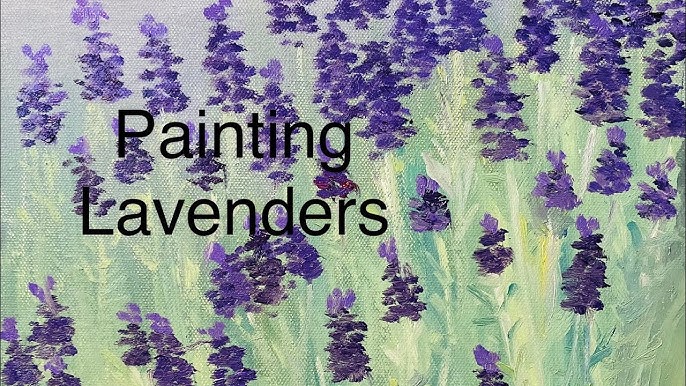So, you’ve got a brush in your hand, a blank canvas in front of you, and a heart that’s ready to paint—but where do you start? If you’re looking for something that’s peaceful, pretty, and surprisingly simple, lavender might just be your perfect muse.
Lavender is one of those flowers that looks elegant even when painted with a loose, beginner style. In this post, I’ll show you how to create a soft, calming lavender painting with a few strokes and a touch of creativity.
Get to Know Lavender’s Shape First
Let’s keep it real: you don’t have to draw botanically accurate lavender for it to look good. Think tall stems, vertical motion, and fluffy clusters of small blossoms. That’s it!
Lavender’s relaxed shape makes it ideal for expressive brushwork and textured painting techniques. This is also why lavender shows up a lot in abstract floral oil art—a style that okarty.com specializes in. Their textured flower paintings are perfect if you’re looking for both inspiration and decor.
Tools and Paints You’ll Need
- A round brush (size 4–6)
- A liner brush for fine lines
- Acrylic or oil paint in:
- Lilac
- Deep violet
- Pale blue
- Sage green
- White
Quick tip: If you’re new to oil paints, use a small canvas (8×10 inches is perfect). It’s easier to manage.
Step-by-Step: Painting Your Lavender
1. Background Comes First
Don’t ignore the background! A simple beige or light gray wash gives your painting a warm tone. Use a wide brush to spread the paint and soften it with a cloth while still wet for a dreamy vibe.
2. Sketch Loose Guidelines
Use diluted gray or brown paint to draw vertical stems. Space them unevenly—nature isn’t perfect, and your painting shouldn’t be either.
3. Add the Lavender Blooms
Now dab the lilac paint along the top half of the stems. Imagine you’re building a pinecone, but upside-down and a bit messier. Layer with darker purples toward the bottom and add light blue or white to the tops for highlights.
The best part? Lavender looks great when it’s not 100% precise.
4. Details Make the Difference
Use your liner brush and green paint to add slim stems and side leaves. Don’t overdo it—lavender has a simple elegance that comes from space and flow.
Make It Your Own
Want to try something different?
- Go abstract. Paint the background with textured swirls or palette knife strokes.
- Add a vase. A rustic jar or clear glass at the bottom adds charm.
- Use bold colors. Try experimenting with sunset pinks or soft yellows in the sky behind your flowers.
If you’re more into ready-made textured lavender art, or want to see how others interpret this flower, head over to okarty.com. They have some gorgeous examples that can spark your own ideas or fill your walls with calm vibes.
Where to Hang Your Lavender Art
Lavender paintings are perfect for:
- Entryways (it gives a fresh first impression)
- Bathrooms (the spa-like calm pairs well with soft purples)
- Bedrooms (great for winding down)
- Office corners (adds just enough creativity)
Compact in size or large and expressive—lavender art adapts beautifully to all kinds of home spaces.
